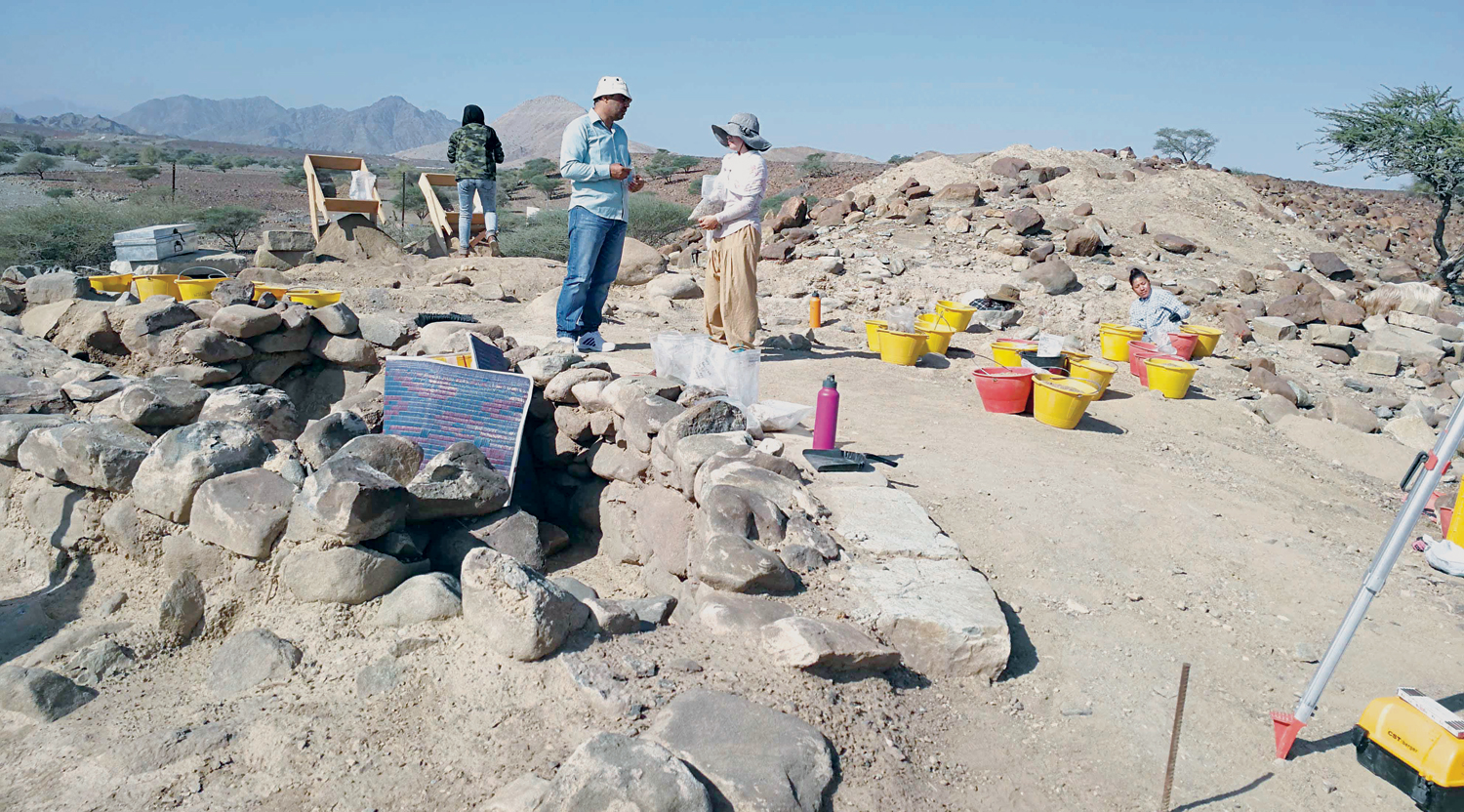

SAHAM: The Department of Archaeology at the College of Arts and Social Sciences at Sultan Qaboos University (SQU), in cooperation with the Ministry of Heritage and Culture, continues surveying archaeological excavations in the areas of Dahwa, Wadi Al Sokhn and Al Thuqaiba in the Wilayat of Saham, where the discovery of 5 archaeological sites were recently announced. The sites contain old settlements dating back to the “Umm Al Nar” civilisation, which is estimated to be about 4,500 years old (2500-2000 BC). These sites are one of the oldest and most important archaeological sites in the North of the Sultanate. Their archaeological discovery began in 2010 through the SQU Department of Archaeology.
Dr Khalid Daghlis, Head of Archaeology Department at SQU, told Oman News Agency that, “the site of Dahwa was first discovered in 2010 by Dr Nasser al Jahwari with the assistance of a student Waleed al Muzaini. The department conducted archaeological surveys between 2013 and 2015, which included an archaeological survey that revealed the existence of five archaeological sites, including ancient settlements dating back to the culture of Umm Al Nar (2500-2000 BC). These sites represent the oldest permanent settlements in the North of the Sultanate”.
During the excavation, a building that dates back to the early Bronze Age and to the Umm Al Nar period was discovered. As a result, the team decided to excavate in a number of other buildings, taking into account the diversity in the planning of the building and the building area. He added that the eldest settlement on the site dates back to the period of Umm Al Nar and especially to the early stage, ie around 2500 BC.
The results of the analysis of “radioactive carbon 14” indicate that the settlement continued on site for 5 centuries until the end of the Umm Al Nar era in the period (1900 BC). The archaeological excavations showed that the site was later used during the Wadi Souk period (1900-1300 BC) as cemeteries. Later, they were used in the Iron Age as many cemeteries were discovered, most of them date back to the second Iron Age (1300-300 BC). The excavations also unveiled that parts of the site were also reused in the Hellenistic period, as cemeteries were discovered belonging to that period.
The head of the Department of Archaeology at SQU explained that due to the importance of the results of the previous excavations, the department started in the beginning of 2018 excavations for the first time in a new location in the area “Wadi Al Sokhn,” which resulted in the discovery of a number of important buildings and archaeological pieces, that clearly indicated the central role played by the inhabitants of the region four thousand years ago. The results indicated that the inhabitants of the region had strong commercial relations with the world’s cultural centres at the time, such as Mesopotamia, Sindh and Iran. They also pointed out that the population produced copper in large commercial quantities, practiced agriculture, especially date palm cultivation, mastered the pottery industry and were directly connected with the inhabitants of the coast.
He further said that in cooperation with the Ministry of Heritage and Culture, they are currently working on a plan for documentation and preservation of the new archaeological sites through the restoration of some important buildings and their preparation and rehabilitation to become one of the important evidence of the depth of the civilised development in the Sultanate and also to put it on the Omani tourist map.
The areas of Dahwa, Wadi Al Sokhn and Al Thuqaiba where archaeological sites were discovered, are located about 26 km to the southwest of the centre of the Wilayat of Saham in the Governorate of North Al Batinah on the eastern sides of the slopes of the Al Hajar Mountain range. — ONA
Oman Observer is now on the WhatsApp channel. Click here



